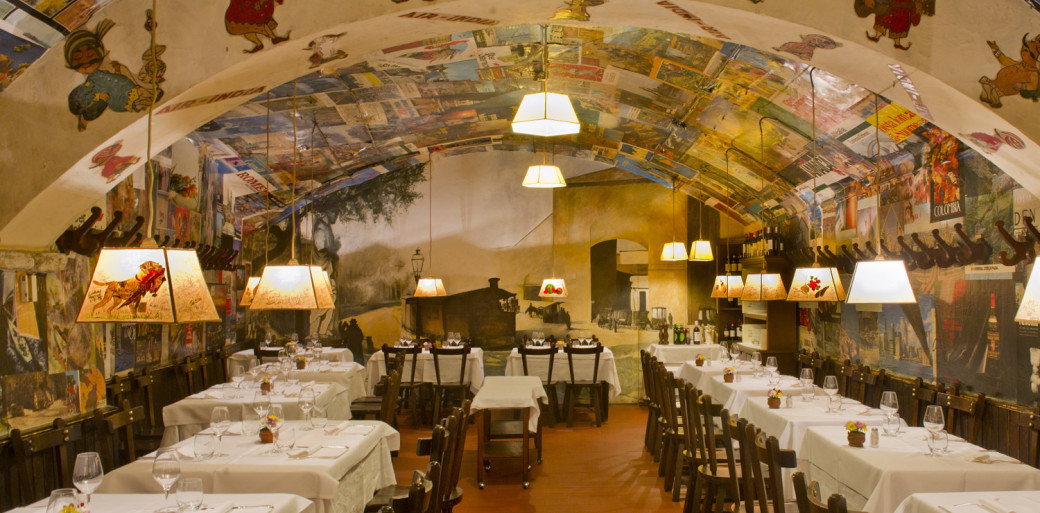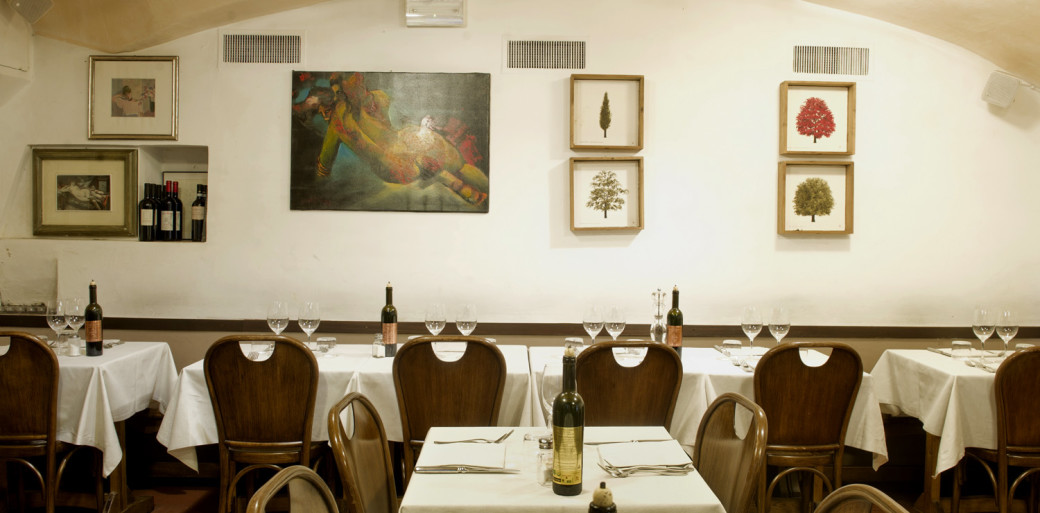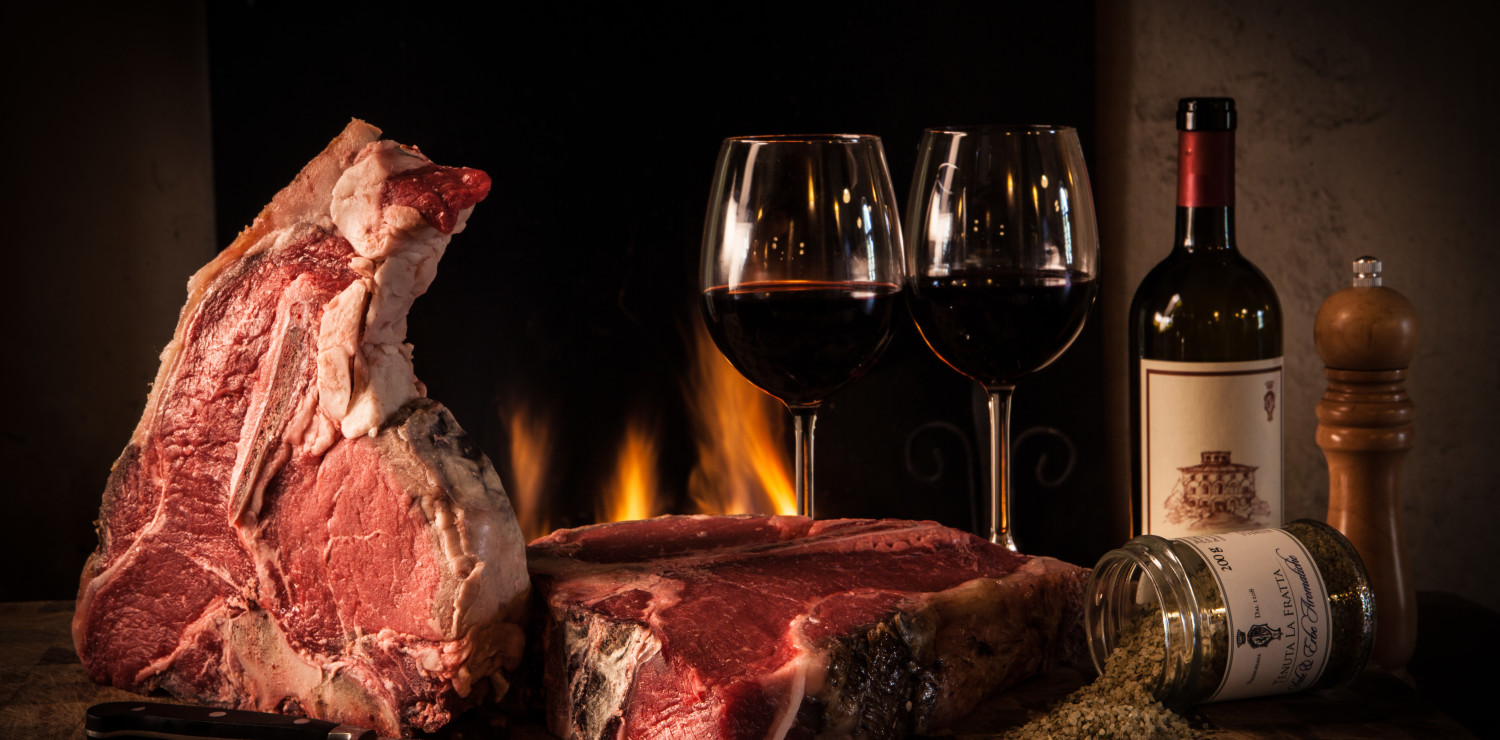Discovering the myth of the 'Florentine steak' in restaurants in Florence and surroundings
A true and genuine journey, for lovers of true Tuscan flavors
“I love you, o pious ox, and gentle is the feeling…” Indeed, a pen which was proud and sanguine was called for, and yet one which was also capable of delicate strokes such as that of the bard Carducci (the solemn tenderness of grandmother Lucia, the light brush strokes of San Martino, consuming and desperate love and the “childish hand” of the pomegranate…) I order to tell a story, in a few words, which is a thousand years old.
The “pious ox” is the gigantic Chianino, the oldest race of oxen and the largest and most pure among those that have lasted to this day, from the sacrificial ceremonies and triumphant processions of the Etruscans and Romans until the stables all over the world in which they are kept like jewels or at least exemplary reproductions.
And, in the poet’s time, the “pious ox” was, in reality, an assiduous patron of the Tuscan fields, a work animal destined to pull wine harvest wagons and ploughs for readying the earth. The attitude was right, constant work but without stress, to which was attributed the characteristics of Chianina meat, good and red and lean, with a bit of marbling (a lovely and poetic word which butchers use) of fat along the fibers, which renders the meat particularly tasty and succulent: of course, and for this reason it’s the Chianina which supplies the best cuts for the bistecca alla Fiorentina.
 La Fiorentina. True steak hosts, butchers and wines
La Fiorentina. True steak hosts, butchers and winesThe classic version, cooked red-hot on the grill, or perhaps on a lava rock, seeing as recent health sanctions do not always consent the use of a live fire to all restaurants. Tasty and succulent, in fact, charred on the outside and cooked little, and still red on the inside. So long as the tenderizing process has been followed correctly, at least fifteen days (there are those who say even thirty…) under refrigeration. And on the condition that it is not thrown on the fire immediately upon being taken from the refrigerator: it must be cooked at room temperature. And it must never be salted when raw, it would lose liquid, and it must not be pierced with a fork or other utensil, it would lose its juices: only at the end of cooking and only once, a grind of pepper may be tolerated (there are those who say also a pat of butter: which could be an homage to the English, from which the name bisteccais derived from “beef steak” and who told of certain parts of the ox which were cooked on the night of San Lorenzo in Florence…).
Let us go, then, on a hunt for a wonderful and succulent Chianina steak in the restaurants of Florence and the surrounding area. Without too many diet problems: 3.5 ounces of meat (not counting the bone) yields 110 calories. The same amount of cholesterol as white meat, but richer in iron, and with linoleic acid which is a good antioxidant. With a few means of recognition, if they bring it out to show it to you before putting it on the fire: the meat of the male calf cannot be small, less than a kilogram in weight. The case is different if the meat comes from a young, virgin female calf. The color is vibrant red, with a light marbling of fine and consistent fat, dense and at the same time elastic to the touch, the outer fat white or pale yellow. Here it is, then.
Okay, but where? Ah. It’s not exactly simple. There are too many, calling themselves Chianina, on menus all over than there can be available in reality. Some restaurants, even those specializing in flavorful steak, openly declare that they use meat which is not Tuscan, such as that of Piedmont, or not even Italian: they are genetically the limousineand the charolaisfrom the Mugello, even if they’ve become “from the region” by way of raising and pasturing.
 Buca Lapi
Buca LapiThere are those who put Argentine meat on the fire, those who use Spanish meat: the first was the poet-butcher of Panzano, Dario Cecchini, proud to declare himself a “non-racist.” The others? They claim to serve Chianina at Buca Lapi, a longtime temple of steak for Italian and foreign VIP’s at the foot of the historic Palazzo Antinori; and the same goes for Buca dell’Orafo, a short stroll from the Ponte Vecchio on the Uffizi side; on the other bank, still in the vicinity of the Ponte Vecchio, here we are at the tables of two characteristic locales in Borgo San Jacopo: Mamma Gina and Cammillo; a few meters on, and at the start of via Santo Spirito we find Il Cantinone.
 Buca dell'Orafo
Buca dell'OrafoAmong the historic locales, always full of Florentines and tourists seeking the succulent fiorentina, we have most assuredly Il Latini in via de’ Palchetti, where Chianina meat is also used in an excellent Florentine-style pot roast; and then Il Fagioli in Corso de’ Tintori and, still on the south side of the Arno, the Antico Ristoro di’ Cambi in via Sant’Onofrio. To stay downtown, another declared “temple” of Chianina is the Osteria del Caffè Italiano in via Isole delle Stinche, next to the Teatro Verdi. And there, a few meters away, some call the steak at Boccanegra in via Ghibellina “moving.”
A bit more on the periphery, on the opposite side of the city, it’s worth trying the fiorentinaat Piazzetta, found, in fact, in the little Bandino square between viale Giannotti and viale Europa, or even at Burde in via Pistoiese, one of the most classis Florentine trattorias. And outside the old city walls? Definitely at Sanesi in Lastra a Signa, and nearby, at Dino in San Colombano in Scandicci.
Or even at Mangiando Mangiando in Piazza Matteotti in Greve in Chianti; still in the Greve area, in Strada, there is Padellina and La Martellina, and in Impruneta, close by, is Il Pruneto and Il Battibecco. In short, one needs only to sharpen one’s knives and teeth. What wonderful tranquility from the “pious ox.”
To discover all the restaurants in Florence and surroundings where you can taste the myth of steak, click here!









